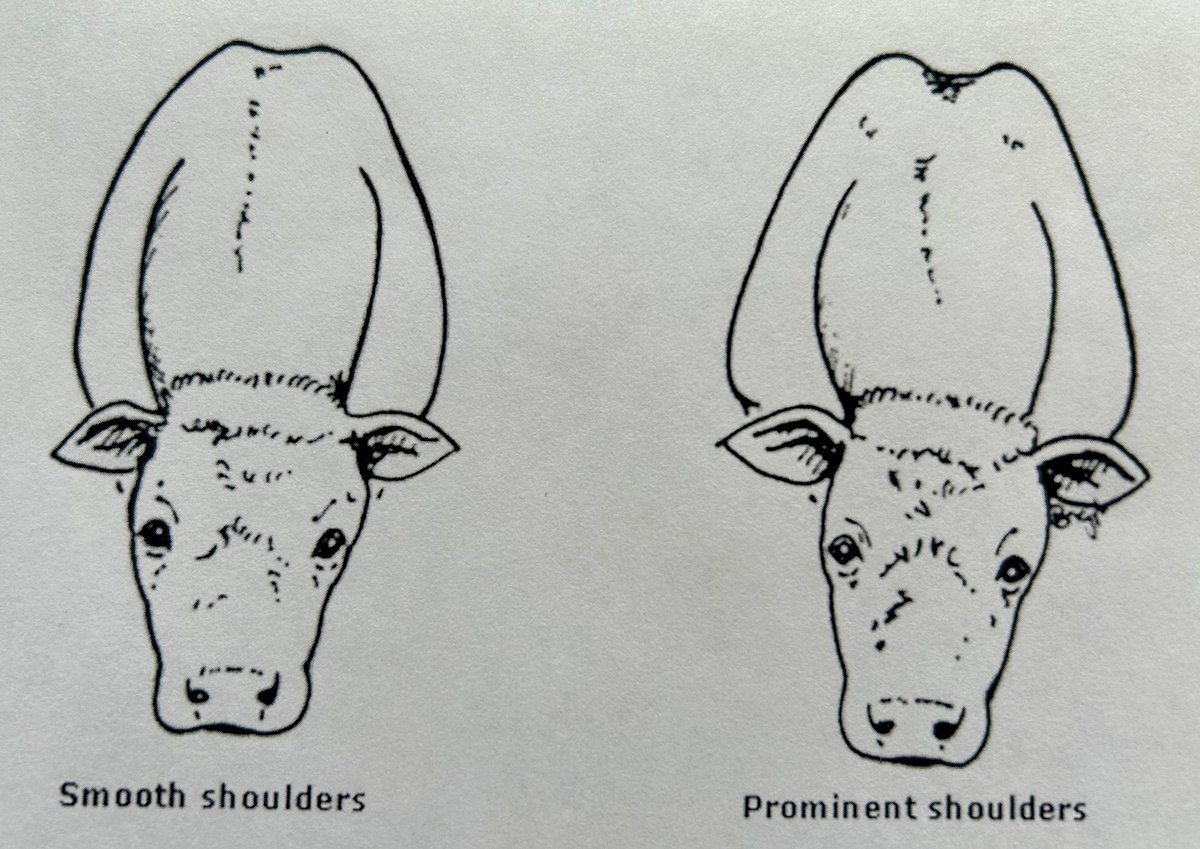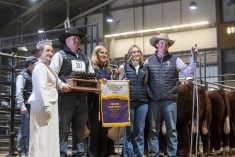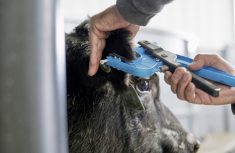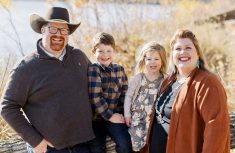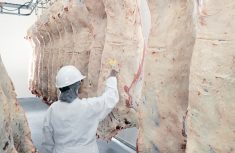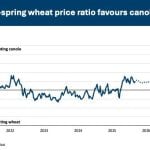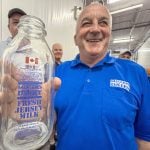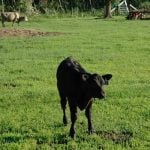What does a good bull look like? It’s a perpetual question during bull buying season, so Canadian Cattlemen asked a commercial producer and a seedstock beef producer how they evaluate bull conformation.
Rawes Ranches
A family member regularly reminds Philip Harty, owner of Rawes Ranches at Strome, Alta., that cattle producers should be in the business of raising animals to better the beef industry, or there isn’t much point to all the effort.
Read Also
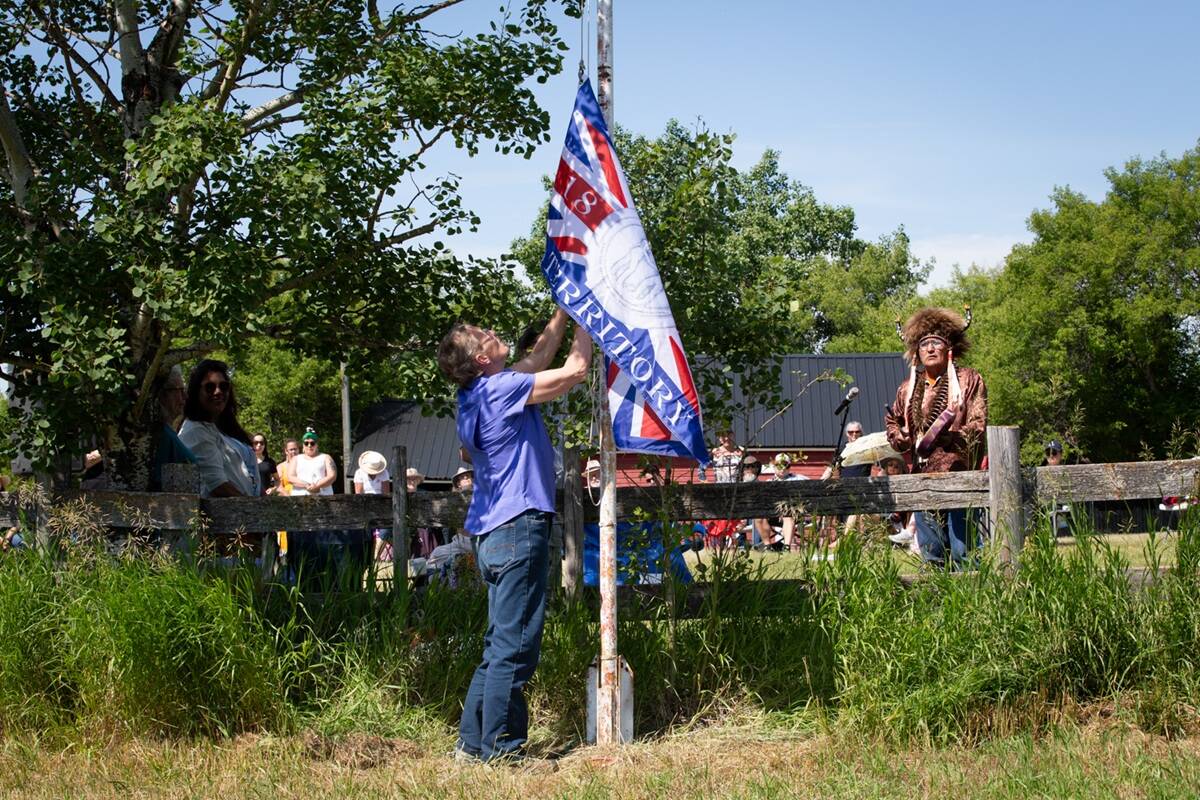
Treaty Land Sharing Network expands reach in Saskatchewan and Alberta
The Treaty Land Sharing Network, which connects land holders with First Nations and Metis people, has expanded since it began in 2018
“The end goal is we do our best to efficiently grow a carcass for harvest,” Harty says. “Many aspects go into this. It’s not only average daily gain or feed conversion, but also total performance on pasture including reproduction, conformation, temperament and other factors. As a starting point, we must select the best bulls possible.”
Harty says the best time for Rawes Ranches to finalize their purebred Charolais sales and “Sight-Unseen” purchase program selections is when bulls are 16 to 20 months old.
“As a yearling, they’re just teenagers with so much change happening. We can gauge their mature characteristics and better determine the final product with a little more age.”
Harty explains characteristics differ slightly for clients keeping more replacements than those targeting a higher-performance market, but many of the attributes will cover the entire package.
His first step for judging structure and conformation is setting aside time to walk each bull on clean concrete so the feet are clearly visible. Harty examines standing and walking hoof placement and leg movement from the front, back and sides.
“Concrete is the best because any kind of soft ground manipulates how the foot is placed so we like to see them stand and move on clean concrete. Bone structure has a lot to do with how they place their feet, and this determines how the leg, foot and toe will grow.”

An animal’s girth changes the alignment of the front legs. When too constricted, it pulls the knees closer together and modifies the body-to-leg ratio. He removes those displaying sickle hocks, post legs, rolled, or variable hooked feet.
Harty also focuses on vigour or intensity when assessing his sale bulls. While many commercial operations have older adults or younger children working and handling cattle, experience has taught him about the relationship between behaviour and performance.
“We used to confuse temperament with vigour. We certainly don’t keep cattle as high-spirited as 10 or 20 years ago, but I think we need to be careful not to go too far the other way, breeding them too quiet or with too low a metabolism so they don’t have what it takes to survive, travel and breed.”
Bar JB Ranch
Cam and Tracy Buyer of Carnduff, Sask., operate a feedlot and run approximately 1,000 commercial cows using mostly Hereford and Charolais bulls on solid black and red females.
Cam Buyer likes to assess his bull power as long yearlings due to the extra time it takes to mature, fill out, and grow closer to their established structure. Additionally, this lets Buyer pencil in a slightly larger number of females per bull than he would with a yearling.
Sires intended to produce replacement heifers are viewed differently than those to be mated for finishing cattle production.
“From the maternal standpoint, we want female makers. For the steers and heifers destined for feedlots and packing plants, we want more physical mass and muscle, but we still need to stay in line with calving ease.”
Buyer uses a multi-step process to select and purchase herd sires.

First, he focuses on calving ease shape, especially clean shoulders, an angular body, and smooth front ends since Bar JB’s herd calves later in the year on pasture with numbers too large to allow overly hands-on management.
“We’re prepared to give up some performance. Not a lot, but a little for calving ease and birth weight. A live 90-lb. calf is better than a dead 110-lb. one.”
The second inspection point is sound legs and feet as bulls typically walk miles to cover extensive groups spread over a large land mass.
“We make sure they stride out. They need to be free moving and walk smoothly. We ensure they’re not stepping on the front of their toes. This is important.”
Third, Buyer analyzes the full slate of pedigree, EPD numbers and stats to identify any potential red flags.
Finally, he views each bull first-hand to assess functionality. He prefers good toplines, thick loins, depth, spring of rib, and rumps carrying down into the legs. Shoulders must be clean and support large top loins.
Buyer avoids overfat animals as in his experience they tend to melt away when asked to cover the ranch’s large amount of ground.“We try to buy from places using a moderate feeding program without excessive barley intake. This also affects longevity as those over-conditioned tend to be harder feeding during the winter.”
Buyer is beginning to lean more heavily on carcass data when making his selections as most of his calves are fed to finish in his feedlot.
“The better data I can get to predict calf characteristics, the more confident I feel about a purchase. In the future, I’ll never completely rely on these numbers, but I think carcass data will carry about 90 per cent of the weight when I choose animals.”
For Harty, asking customers for their trust, and to invest their money because of his words and actions, means reputation and integrity are paramount.
“We feel more responsible than most imagine because we have the information from the genetic selection, breeding, birthing and performance,” Harty says. “We put in the extra effort to inspire our customer’s confidence. A key component is beginning with the right conformation and structure.”
Bruce Derksen lives, works and writes in Lacombe, Alta. He has 30 years of experience as a hands-on participant in numerous branches of the western Canadian livestock industry.

